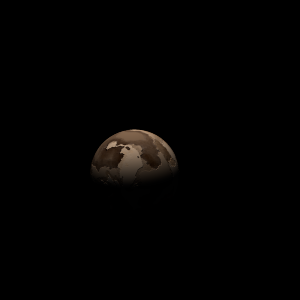|
|
Space Astro
|
Info for exoplanet "Amoro'su"
| Scientific (actual) data |
|---|
| Name | K2-415 b |
| Planet status | Confirmed |
| Planet mass | 0.009 |
| Radius | 0.09055 |
| Orbital period | 4.01797 |
| Semi major axis | 0.027 |
| Orbit eccentricity | 0.03 |
| Inclination | 89.32 |
| Discovered | 2023 |
| Updated | 2023-02-06 |
| Tzero tr | 2458100 |
| K | 4.1 |
| Temperature (kelvin) | 400 |
| Publication | Published in a refereed paper |
| Detection type | Primary Transit |
| Mass measurement type | Radial Velocity |
| Radius measurement type | Primary Transit |
| Alternate names | TOI-5557 b |
| Star name | K2-415 |
| Right ascension | 137.2° |
| Declination | 11.86° |
| Mag v | 12 |
| Star distance | 21.8043 |
| Star metallicity | -0.13 |
| Star mass | 0.1635 |
| Star radius | 0.1965 |
| Star temperature | 3173 |
| Star alternate names | TOI-5557 |
| Wikipedia article | K2-415 b |
Back
| |
| Fictional info (?) |
|---|
| Suggested name | Amoro'su |
| Planet type | Hot planet |
| The smooth Borealis basin in the northern hemisphere covers 21 percent of the planet and may be a giant impact feature.
The nice oceans are crawling with unpredictable but medieval bacteria called the "Bohog". They spend their life in caves while seeking another species called Nazizi-heg at night. Most of them are not similar to the Uken'ag but have 6 legs and vary in length from 1 to 1 cm. Most Bohog can reproduce at temperatures from 80 to 150°C and extreme gravity. |
| Estimated population | 170000000 |
| Atmosphere | Carbon dioxide | 68% |
| Methane | 31% |
| Water | 0.33% |
| Oxygen | 0.0038% |
| Atmospheric pressure | 0.9 bar |
 |
| Moon | Enuheh | Medium-sized almost round oceanic asteroid |
| Jonot-eqilu'faw | Very small irregular crater-filled moon |
| Josekem | Small almost round ice moon |
| Siris An | Medium-sized slightly egg-shaped gaseous comet |
| Google search for Amoro'su |
|
Website by Joachim Michaelis
|
|
|
|